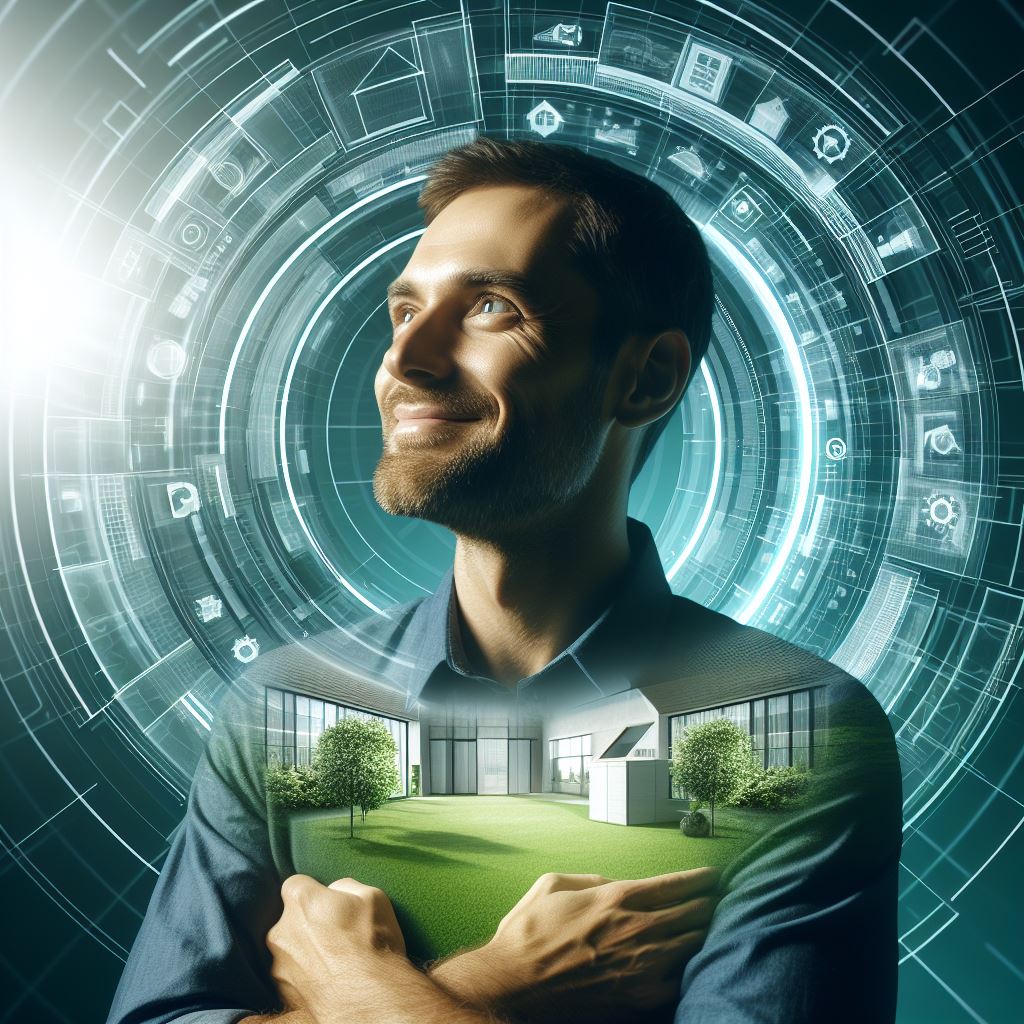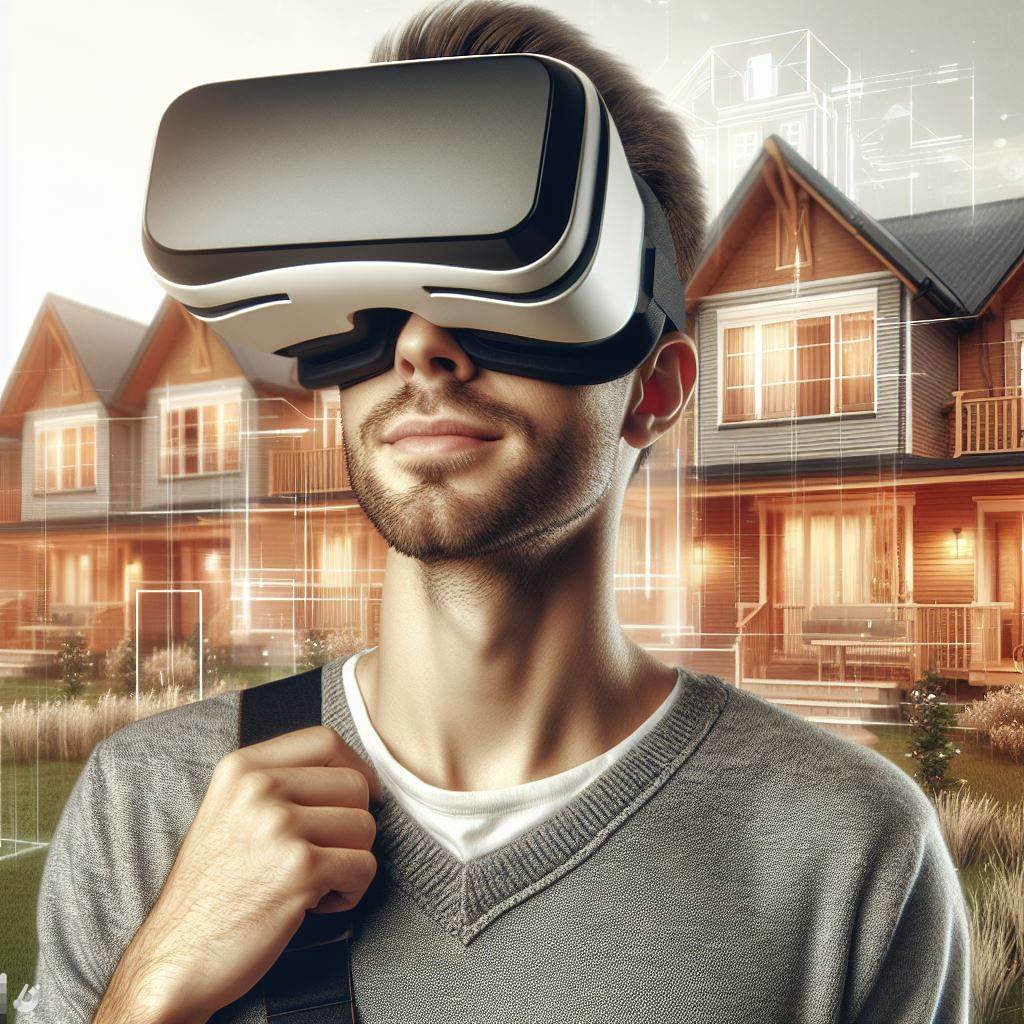Introduction
In the realm of architecture and construction, green building has emerged as a revolutionary concept.
Its core principle revolves around creating sustainable structures that minimize environmental impact throughout their lifecycle.
Today, technology plays a pivotal role in advancing the green building sector, propelling it toward unprecedented heights.
As we delve into the intricacies of green building, it becomes evident that the integration of cutting-edge technology is not just an option but a necessity.
The construction industry is experiencing a paradigm shift, with an increasing emphasis on environmentally conscious practices.
This transformation is not only driven by a global commitment to combating climate change but also by the economic benefits associated with energy-efficient and eco-friendly buildings.
Our journey through this blog section will unravel the myriad ways in which technology is shaping the landscape of green building.
From intelligent building materials to innovative energy management systems, each aspect contributes to a more sustainable and eco-conscious future.
The marriage of technology and green building is not merely a trend but a fundamental shift in the way we conceptualize and construct our living spaces.
Throughout this exploration, we will highlight specific technological advancements that are revolutionizing the industry.
From the adoption of Building Information Modeling (BIM) for precise planning to the utilization of IoT devices for real-time monitoring, these innovations are at the forefront of sustainable construction practices.
As we navigate through the upcoming sections, brace yourself for a deep dive into the world of green building technology.
Our goal is to shed light on the latest trends, share success stories, and inspire a collective commitment to a greener, more sustainable future.
Together, let’s embark on a journey where technology and environmental responsibility converge, shaping the buildings of tomorrow.
The Role of Renewable Energy in Green Building
Use of solar panels and their increasing popularity in green buildings
Solar panels are becoming increasingly popular in green buildings due to their numerous benefits.
Firstly, solar panels generate renewable energy, which is clean and sustainable, reducing reliance on fossil fuels.
By harnessing the power of the sun, green buildings can significantly reduce their carbon footprint, contributing to a greener planet.
The use of solar panels also helps to lower energy costs as they convert sunlight into electricity, offsetting the need to purchase energy from the grid.
Benefits of generating renewable energy on-site
Moreover, generating renewable energy on-site provides a sense of energy independence and resilience.
In case of power outages or disruptions, green buildings with solar panels can continue to operate, ensuring uninterrupted functionality.
Advancements in technology have made solar panels more efficient and affordable than ever before.
Today, solar panels can convert a higher percentage of sunlight into electricity, maximizing energy production.
In addition, the cost of solar panels has significantly decreased over the years, making it a more accessible option for green building owners.
Furthermore, the integration of smart technology has improved the efficiency of renewable energy systems.
Smart inverters, for example, optimize the conversion of solar energy, ensuring maximum power output.
How technology has improved the efficiency and affordability of renewable energy systems
Additionally, smart grid technology allows for better monitoring and management of solar energy production and consumption.
This enables green building owners to track their energy usage, identify potential energy savings, and make informed decisions to optimize energy efficiency.
Another benefit of generating renewable energy on-site is the potential for selling excess energy back to the grid.
Through net-metering or feed-in tariff programs, green building owners can earn credits or even revenue by exporting surplus energy.
This not only offsets the initial investment in solar panels but also encourages the growth of renewable energy adoption.
Additionally, on-site renewable energy generation helps to stabilize energy prices and reduce the vulnerability to fluctuations in energy markets.
As renewable energy systems become more widespread, the demand for traditional energy sources decreases, mitigating the impact of price volatility.
In fact, renewable energy plays a crucial role in green building today.
The increasing popularity of solar panels and advancements in technology have made it more efficient and affordable for green building owners to generate renewable energy on-site.
This not only helps to reduce reliance on fossil fuels but also brings numerous benefits, including cost savings, energy independence, and resilience.
Overall, the integration of renewable energy systems paves the way for a greener and more sustainable future in the construction industry.
Read: Green Spaces in Urban Development
Smart Home Automation in Green Buildings
The concept of smart home automation and how it is integrated into green buildings
Smart home automation refers to the use of technology to control and automate various aspects of a home, including lighting, heating, cooling, and security systems.
In the context of green buildings, smart home automation focuses on increasing energy efficiency and reducing environmental impact.
Ways technology can be used to increase energy efficiency in homes
There are several ways in which technology can be used to enhance energy efficiency in homes:
- Sensor-based lighting systems can automatically turn off lights when a room is unoccupied, saving energy.
- Smart thermostats can learn and adapt to a homeowner’s preferences, adjusting temperature settings for optimal energy usage.
- Automated shading systems can control natural light and heat, reducing the need for artificial lighting and excessive cooling or heating.
- Solar panel integration allows homeowners to generate their own renewable energy and reduce dependence on the grid.
- Energy monitoring systems provide real-time data on energy consumption, enabling homeowners to make informed decisions about energy usage.
Examples of smart devices and systems commonly used in green buildings
Examples of smart devices and systems commonly used in green buildings include:
- Smart meters: These devices measure the energy consumption of individual appliances and provide data for analysis and optimization.
- Smart thermostats: These intelligent devices regulate heating and cooling based on occupancy and temperature preferences.
- Smart lighting systems: These systems use motion sensors and timers to control lighting, reducing energy wastage.
- Home energy management systems: These systems integrate various energy-consuming devices and allow homeowners to monitor and control them remotely.
- Smart appliances: Energy-efficient appliances such as smart refrigerators and washing machines optimize energy usage and reduce wastage.
Integrating smart home automation into green buildings offers numerous benefits. Firstly, it significantly reduces energy consumption and lowers utility costs.
Secondly, it enhances occupant comfort and convenience by automating tasks and providing personalized settings.
Lastly, it contributes to a more sustainable future by reducing carbon emissions and promoting renewable energy usage.
In essence, smart home automation plays a crucial role in increasing energy efficiency in green buildings.
With the rapid advancement of technology, the integration of smart devices and systems is becoming more accessible and affordable.
By leveraging these technologies, homeowners can enjoy a comfortable and eco-friendly living environment while reducing their ecological footprint.
Read: Smart Homes: The Future of Residential Living
Innovative Materials and Construction Techniques
Green building practices have come a long way in recent years, thanks to advancements in technology and the development of innovative materials and construction techniques.
These new innovations have made it possible to create sustainable buildings that are not only eco-friendly but also aesthetically pleasing and durable.
New materials and construction techniques that enhance sustainability in green buildings
- Biodegradable materials such as bamboo and straw bales are being used for construction.
- Insulated concrete forms (ICFs) provide improved energy efficiency and durability.
- Green roofs, also known as living roofs, are becoming more popular for their ability to absorb rainwater and provide insulation.
- Modular construction allows for faster and more efficient building processes, reducing waste and energy consumption.
- 3D printing technology is being utilized to create complex architectural designs while minimizing material waste.
Use of recycled and eco-friendly materials in construction
- Recycled plastic and glass are being turned into construction materials, reducing waste and promoting circular economy practices.
- Reclaimed wood and salvaged materials give a unique character to buildings while reducing the demand for new resources.
- Green concrete, made from industrial byproducts such as fly ash, is more sustainable and has a lower carbon footprint.
- Cellulose insulation, made from recycled paper fibers, provides better thermal performance and soundproofing.
- Solar panels integrated into building materials, such as roof tiles and windows, generate renewable energy on-site.
How technology has improved the strength, durability, and aesthetic appeal of these materials:
Technological advancements have revolutionized the manufacturing and production of green building materials, resulting in significant improvements across various aspects:
- Nanotechnology has been used to enhance the strength and durability of materials such as wood and concrete.
- Innovative coatings and finishes protect materials from degradation, extending their lifespan.
- Virtual reality (VR) and augmented reality (AR) are used in the design phase to visualize and optimize energy efficiency.
- Building information modeling (BIM) software allows for precise planning, reducing material waste and construction errors.
- Advanced sensors and smart technology enable real-time monitoring of energy usage and environmental conditions.
In short, the integration of innovative materials and construction techniques has revolutionized green building practices.
The use of new materials, such as biodegradable and recycled options, along with technological advancements, has fostered sustainability, durability, and aesthetic appeal.
With continuous advancements, the future of green building looks promising, offering even more eco-friendly and efficient solutions.
Read: Urban vs. Suburban Development Shifts

Building Information Modeling (BIM) in Green Building Design
Building Information Modeling (BIM) is a digital representation of the physical and functional characteristics of a building.
It is a process that involves the creation and management of a comprehensive building model that integrates architecture, engineering, and construction information.
BIM has revolutionized the way green buildings are designed, constructed, and operated.
It offers several benefits that enhance the sustainability and efficiency of green building projects.
Streamlining Design and Construction Process
BIM software and tools play a crucial role in streamlining the design and construction process of green buildings.
It allows architects, engineers, and contractors to collaborate and work on a single, coordinated model.
Through BIM, design changes can be easily implemented and communicated to all parties involved.
This helps in reducing errors, rework, and unnecessary delays, resulting in a more efficient and time-saving design and construction process.
Optimizing Energy Efficiency
One of the key benefits of BIM in green building design is its ability to optimize energy efficiency.
BIM allows designers to simulate and evaluate different design options, such as building orientation, materials, and systems, to identify the most energy-efficient solutions.
By analyzing the building’s energy performance through BIM, architects and engineers can make informed decisions to minimize energy consumption and maximize renewable energy utilization.
This leads to lower operational costs and a reduced environmental impact.
Facilitating Collaboration and Coordination
BIM promotes collaboration and coordination among architects, engineers, and contractors, leading to better overall project outcomes.
It enables real-time data sharing and communication, allowing all stakeholders to work together efficiently.
With BIM, architects can seamlessly integrate their designs with engineering systems, ensuring that all components are properly coordinated.
This minimizes conflicts and clashes during construction, resulting in smoother and more efficient construction processes.
Enhancing Facility Management and Operation
Beyond design and construction, BIM also extends its benefits to facility management and operation.
The comprehensive building model developed during the design and construction phase can be utilized for ongoing facility management tasks.
BIM provides a platform for storing and accessing valuable information, such as equipment manuals, maintenance schedules, and energy usage data.
This simplifies facility management processes and enables better decision-making for optimization and maintenance.
The Future of Green Building Design
As technology continues to advance, BIM is expected to play an even more significant role in green building design.
With the integration of artificial intelligence and machine learning, BIM can further enhance energy-efficient solutions.
Additionally, the use of BIM in combination with other emerging technologies like Internet of Things (IoT) and Virtual Reality (VR) can create interactive and immersive experiences, allowing stakeholders to visualize and assess building performance more effectively.
In general, Building Information Modeling (BIM) is a powerful tool that revolutionizes green building design.
Its ability to streamline the design and construction process, optimize energy efficiency, facilitate collaboration, and enhance facility management makes it an indispensable asset in the pursuit of sustainable and environmentally-friendly buildings.
Read: Garage Conversion Permits: Key Steps
The Role of Artificial Intelligence (AI) in Green Buildings
In today’s rapidly evolving world, technology plays a crucial role in creating sustainable and energy-efficient buildings.
One of the most promising technologies in this regard is Artificial Intelligence (AI).
AI has the potential to revolutionize the way buildings are designed, operated, and managed, leading to more eco-friendly and intelligent structures.
Let’s explore how AI can optimize energy consumption, enable real-time monitoring and control, and facilitate predictive maintenance in green buildings.
Optimizing Energy Consumption in Buildings
AI technology can be utilized to optimize energy consumption in buildings by analyzing data and making intelligent decisions.
Here are some ways AI can contribute to energy efficiency:
- Energy Demand Prediction: AI algorithms can analyze historical and real-time data to predict energy demand patterns in buildings accurately.
This information allows building managers to adjust energy usage and reduce waste accordingly. - Occupancy Sensing and Adaptive Controls: AI-powered sensors can detect human presence in different areas of a building.
By monitoring occupancy patterns, AI systems can adjust lighting, ventilation, and temperature settings accordingly, optimizing energy consumption without compromising comfort. - Energy-Efficient HVAC Systems: AI can analyze weather forecasts, historical data, and real-time building conditions to optimize HVAC (heating, ventilation, and air conditioning) systems.
This ensures that energy usage is minimized while maintaining optimal indoor comfort. - Smart Lighting Systems: AI can control lighting systems to adjust brightness levels, turn off lights when spaces are unoccupied, and prioritize natural light utilization.
This significantly reduces energy wastage in buildings.
Real-Time Monitoring and Control of Energy Usage
AI-powered sensors and systems enable real-time monitoring and control of energy usage in green buildings.
This allows for proactive energy management and quick identification of any anomalies or inefficiencies. Here’s how AI helps in this aspect:
- Sensor Networks: AI utilizes sensor networks to monitor energy usage, temperature, humidity, and air quality in different areas of a building.
Real-time data enables building operators to identify energy-intensive areas and take necessary actions. - Automated Fault Detection: AI algorithms can detect inefficiencies and faults in energy systems, such as HVAC or lighting.
By continuously monitoring various parameters, AI systems can alert building managers to potential issues and facilitate timely interventions. - Predictive Analytics: AI can analyze historical and real-time data to identify energy usage patterns.
This helps in predicting future energy requirements and optimizing energy distribution and utilization. - Intelligent Energy Grid Integration: AI can communicate with the energy grid to optimize energy usage based on real-time supply and demand data.
By adjusting energy consumption during peak hours or leveraging renewable energy sources, AI maximizes energy efficiency and minimizes costs.
Predictive Maintenance and Energy Management
AI has immense potential in predictive maintenance and energy management in green buildings.
By analyzing data and providing insights, AI can ensure optimal performance of building systems. Here are some key benefits:
- Early Fault Detection: AI algorithms can detect potential faults or malfunctions in equipment by analyzing sensor data.
This enables proactive maintenance, reducing downtime and energy wastage. - Condition-Based Maintenance: AI can monitor the condition of building systems and equipment in real-time.
By analyzing performance metrics and comparing against established thresholds, AI systems can determine the optimal time for maintenance activities, increasing operational efficiency. - Energy Performance Analysis: AI algorithms can analyze energy consumption patterns to identify areas for improvement.
By providing actionable insights, AI facilitates energy management strategies, helping building owners and operators make informed decisions. - Continuous Optimization: AI can continuously learn and adapt based on data analysis.
By leveraging machine learning algorithms, AI can refine energy usage algorithms over time, resulting in continuous optimization and increased energy efficiency.
In a nutshell, the integration of AI technology in green buildings opens up new possibilities for sustainable design, energy management, and operational efficiency.
AI’s ability to optimize energy consumption, enable real-time monitoring and control, and facilitate predictive maintenance makes it a valuable tool in creating a greener and smarter future for buildings.
Conclusion
This blog post explored various tech trends in green building today.
From machine learning and AI to IoT and energy management systems, these technologies are driving sustainability practices in the industry.
The significance of integrating technology in green building cannot be overstated.
It not only helps in reducing energy consumption and carbon emissions but also improves the overall efficiency and performance of buildings.
To ensure a more sustainable future, it is important for readers to stay updated on the latest tech trends in green building.
By staying informed, individuals can actively contribute towards creating buildings that are environmentally friendly and energy-efficient.
In summary, embracing technology in green building practices is crucial.
It has the potential to revolutionize the industry and pave the way for a more sustainable and eco-friendly future.
Let us strive towards a greener tomorrow by exploring and implementing these tech trends in our projects.




